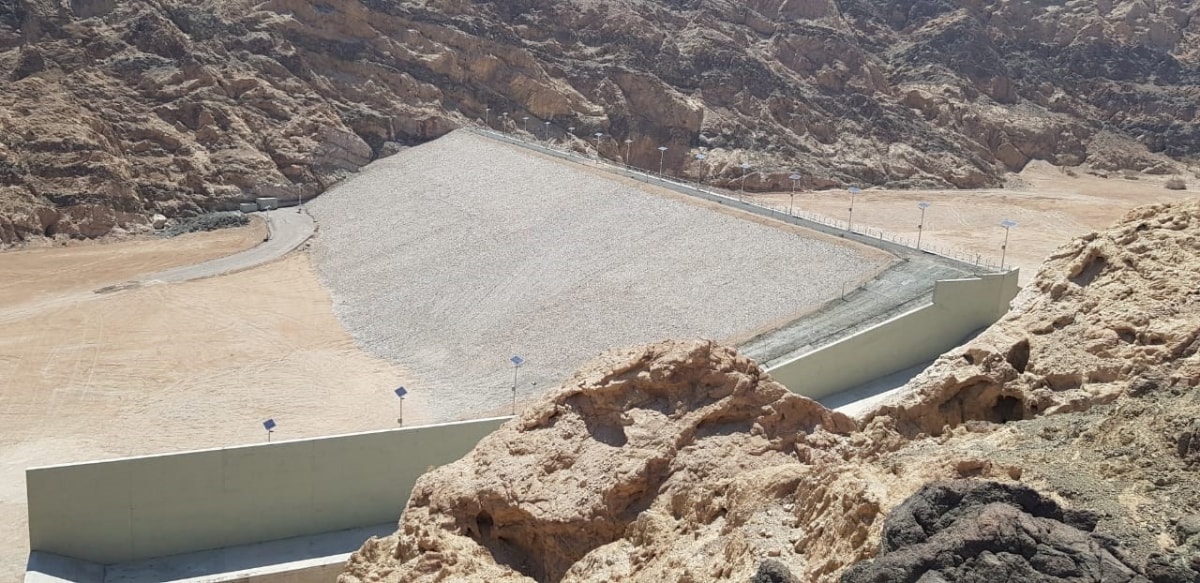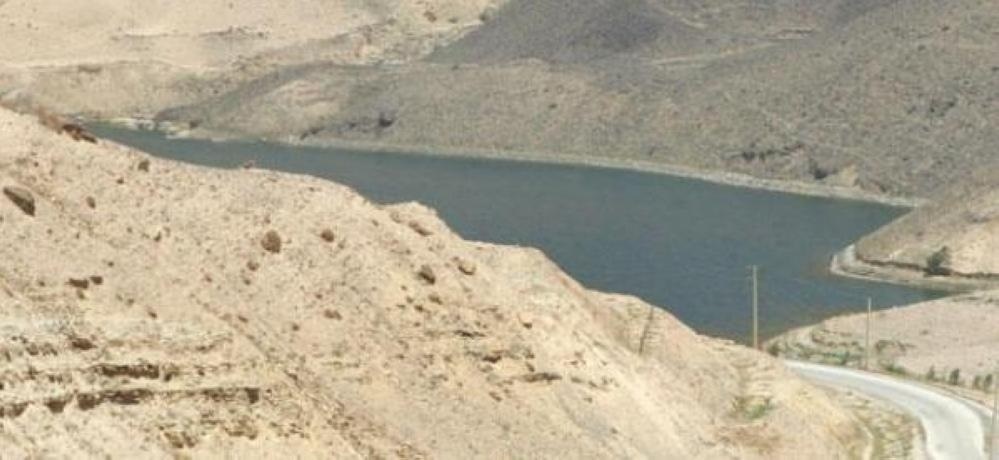What are the water dams in Jordan?
Weather of Arabia - Jordan is one of the countries that suffers from water scarcity due to the scarcity of water resources, which prompted the successive governments in the Kingdom represented by the Ministry of Water and Irrigation to exploit rainwater by building and establishing dams, as the first dam was established, which is the Sharhabil bin Hasna dam in the year 1967, and Jordan includes 17 water dams, we will learn about them in this article.
Water dams in Jordan
1. King Talal Dam - Jerash Governorate
It is the largest dam in Jordan, with a storage capacity of 75 million cubic meters. It is of the type of rocky aggregate, and is used for irrigation and electricity generation.
- Tributaries of King Talal Dam: Zarqa River
- The areas benefiting from the dam: (115) thousand dunums of the lands of the central and southern Jordan Valley, at a rate of (85) million cubic meters annually.

2. Al-Kafrin Dam - Al-Balqa Governorate
It is located in the central Jordan Valley, and is the second dam of Jordan in terms of the year of foundation after Sharhabil bin Hasna Dam.
- The tributaries of the Al-Kafrin Dam: the permanent flowing springs of Wadi Al-Seer, Al-Bahath and Iraq Al-Amir, and the local side valleys that flow only during the rainy season.
- The areas benefiting from the dam: (16) thousand dunums of the lands of Al-Rama and Al-Kafrin.
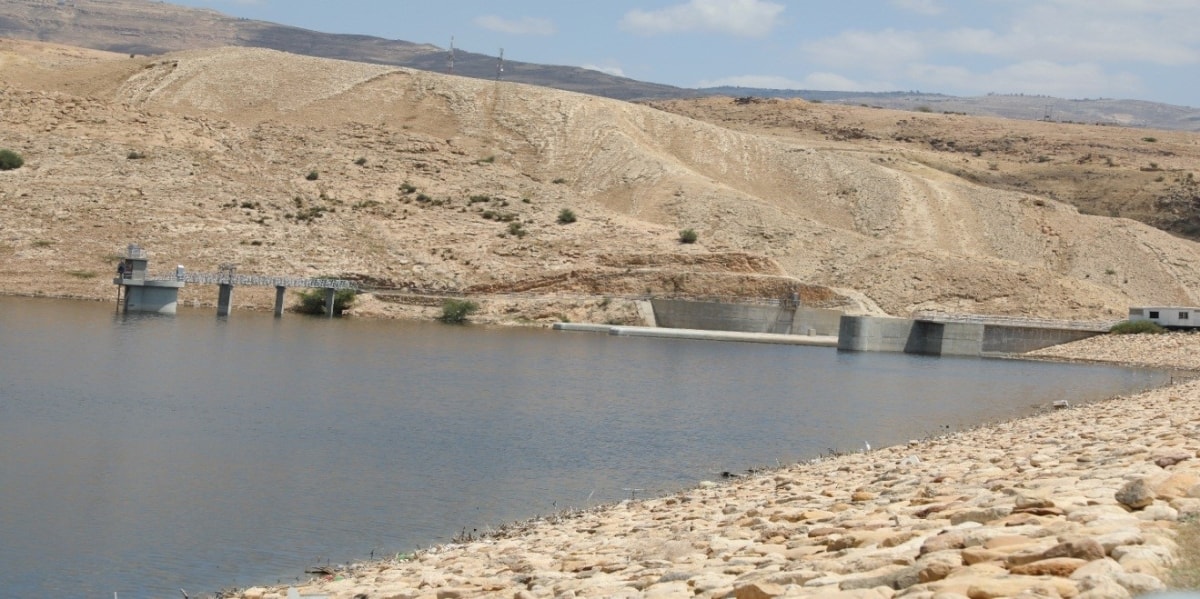
3. Al-Waala Dam - Madaba Governorate
It is located 20 kilometers south of the city of Madaba, on the north of the royal road leading to Theban. It has a storage capacity of 8.18 million cubic meters. It is of a homogeneous concrete and earth type, and is used for irrigation and groundwater recharge.
- The tributaries of the Al-Waala Dam: The flood waters mainly come through Wadi Al-Ramil, Wadi Al-Haq, Wadi Al-Dafiana, Wadi Al-Qanater and Wadi Al-Hamam, mainly and other side valleys surrounding the dam lake.
- The areas benefiting from the dam: the agricultural areas on both sides of the Wala Valley below the dam - Madaba Governorate and the Capital Governorate (drinking water through the wells of Wala and Al-Hidan).

4. Wadi Araba Dam - Irbid Governorate
It has a storage capacity of 16.8 million cubic meters, and it is of the type of rocky aggregate, and is used for irrigation and drinking water purposes.
- Tributaries of the Arab dam: the water entering through the side valleys (Wadi Al-Arab, Wadi Zahar) - and pumping water from the King Abdullah Canal.
- The areas benefiting from the dam: (12,500) dunums of lands in the northern Jordan Valley, as well as the Balqa governorate and the capital with drinking water.
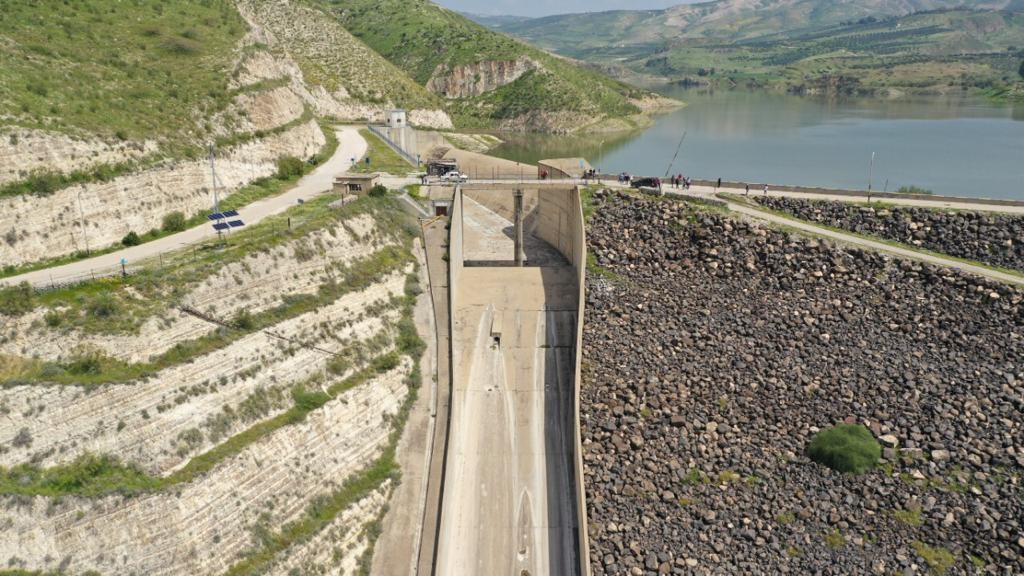
5. Al-Wehda Dam - Irbid Governorate
It is a joint Arab dam between Jordan and Syria, located on the Yarmouk River, with a length of 110 meters and a storage capacity of 110 million cubic meters. The dam aims to provide Jordan with water, both for human consumption and for irrigating crops, in exchange for supplying Syria with hydroelectric power. It is of a concrete type. It was erected in the Muqarni area on the Jordanian-Syrian border to benefit from the waters of the Yarmouk River and the springs and valleys in the region.
- The tributaries of the dam: Wadi Allan, Wadi al-Harir, Wadi Zayzoun on the Syrian side and Wadi al-Shallala on the Jordanian side.
-
The areas benefiting from the dam: the agricultural areas in the Jordan Valley, which have an area of about (31) thousand dunums, and the city of Amman at a rate of (50) m 3 annually for local purposes.

6. Sharhabil bin Hasna Dam (Zaqlab) - Jordan Valley
It is the first dam that was built in Jordan in 1967. It has a storage capacity of 4 million cubic meters. It is of an earthy type and is used for irrigation purposes.
- Tributaries of Wadi Zaqlab Dam: Wadi Zaqlab
- The areas benefiting from the dam: The dam works to irrigate (8) thousand dunums of the lands of the northern Jordan Valley.
.jpg)
7. Karama Dam - Jordan Valley
Its storage capacity is 55 million cubic meters, and it is of the earthy type, and is used for irrigation purposes.
- Tributaries of the Karama Dam: Wadi Al-Malahah in addition to the floods of the King Abdullah Canal - the waters of the side valleys diverted to the King Abdullah Canal (Kafrnaja, Al Yabis, Rajeb) - the floods of the aquifers and the dragging of the Jordan River water into the dam lake and the water exceeding the capacity of King Talal Dam.
- The areas benefiting from the dam: The dam works to irrigate (40) thousand dunums of the lands of the southern Jordan Valley.
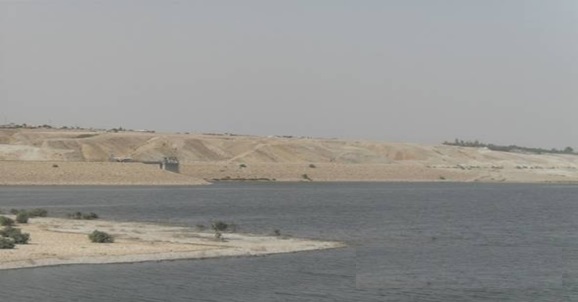
8. Mujib Dam - Madaba Governorate
Its storage capacity is 30 million cubic meters. It is of a homogeneous concrete and earth type, and is used for irrigation, drinking and industry purposes.
- The tributaries of the Mujib Dam are: Wadi Saida, Wadi Nakhila, Wadi Lajoun and Wadi Swaqa.
- The areas benefiting from the dam: the capital Amman, the tourist resorts on the shore of the Dead Sea, the Mujib Nature Reserve and the agricultural lands below and above the dam.
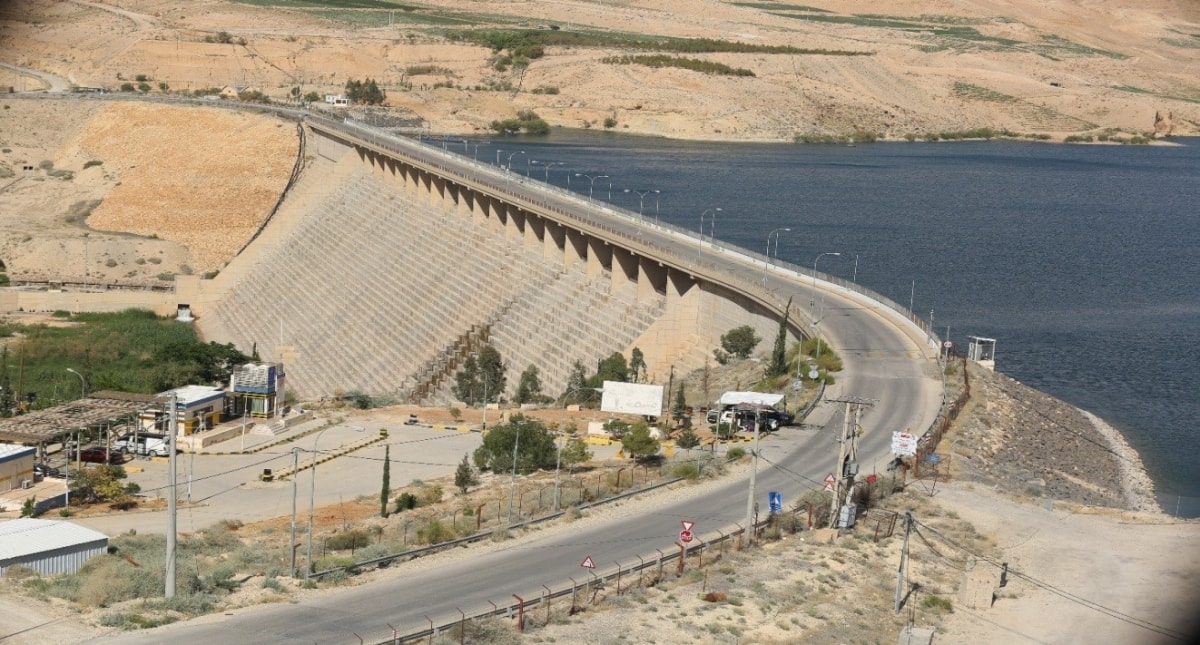
9. Tannour Dam - Tafila Governorate
It has a storage capacity of 16.8 million cubic meters, and it is of the converted concrete type, and is used for irrigation purposes.
- The tributaries of the Tannour Dam: Wadi Al-Hasa, the Seil Jais, and small tributaries of the surrounding mountains
- The areas benefiting from the dam: Irrigation of agricultural lands in the second phase in the Southern Ghor region, which is estimated to have an area of about (7000) dunums when it is operational, supplementary irrigation of agricultural lands within the first phase in the Southern Ghor, providing the Arab Potash Company with water needs through the link between the pumping station project The new Sammar and the Directorate of the transmission line, and the provision of the Directorate of Agriculture Tafila / Directorate of Forestry with the necessary water to irrigate the forest trees inside the campus of the dam.
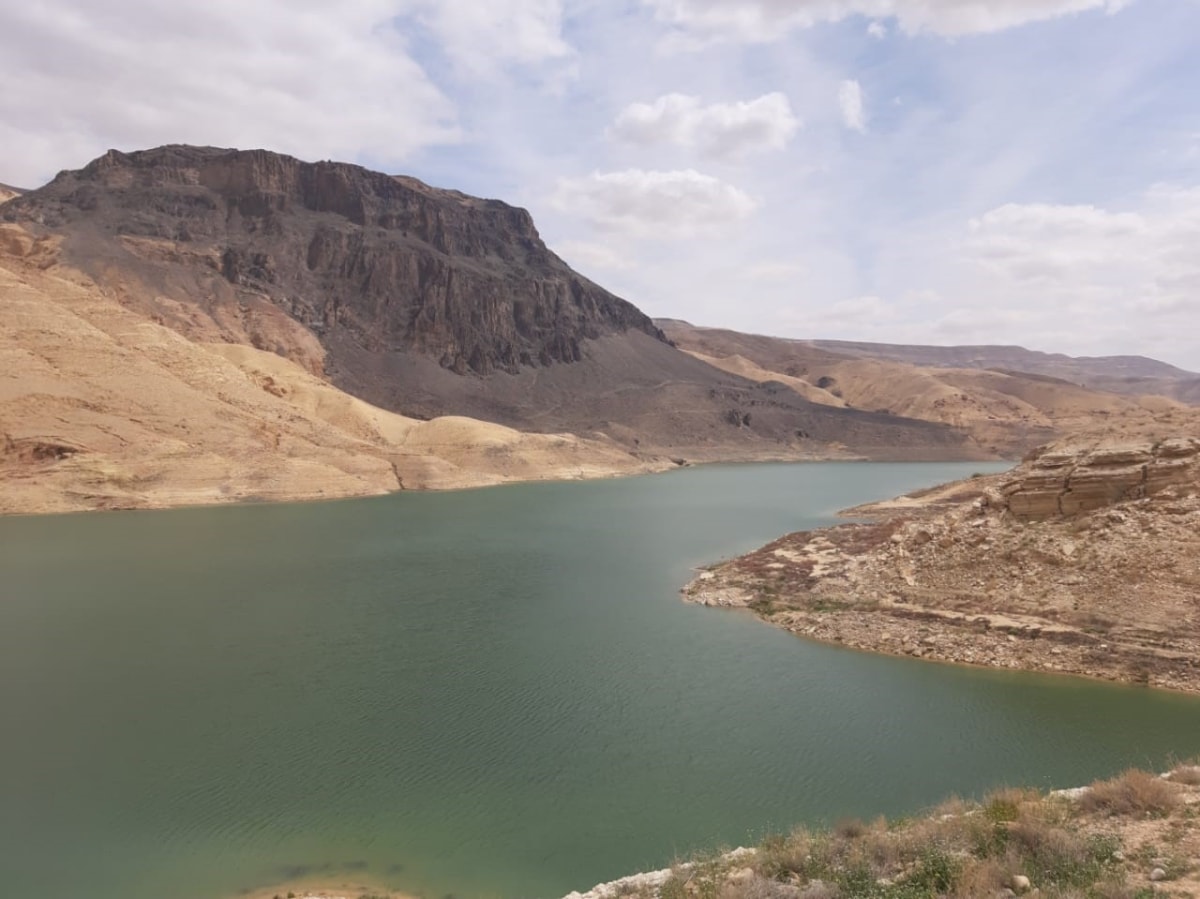
10. Kafrnaja Dam - Ajloun Governorate
It has a storage capacity of 7.8 million cubic meters, and it is of a concrete type. It was established in 2011. It is used for the purposes of irrigating crops.
- Tributaries of the Kafrnaja Dam: Wadi Kafrnaja
- Areas benefiting from the dam: Kufranja area for drinking and the surrounding farms for irrigation.
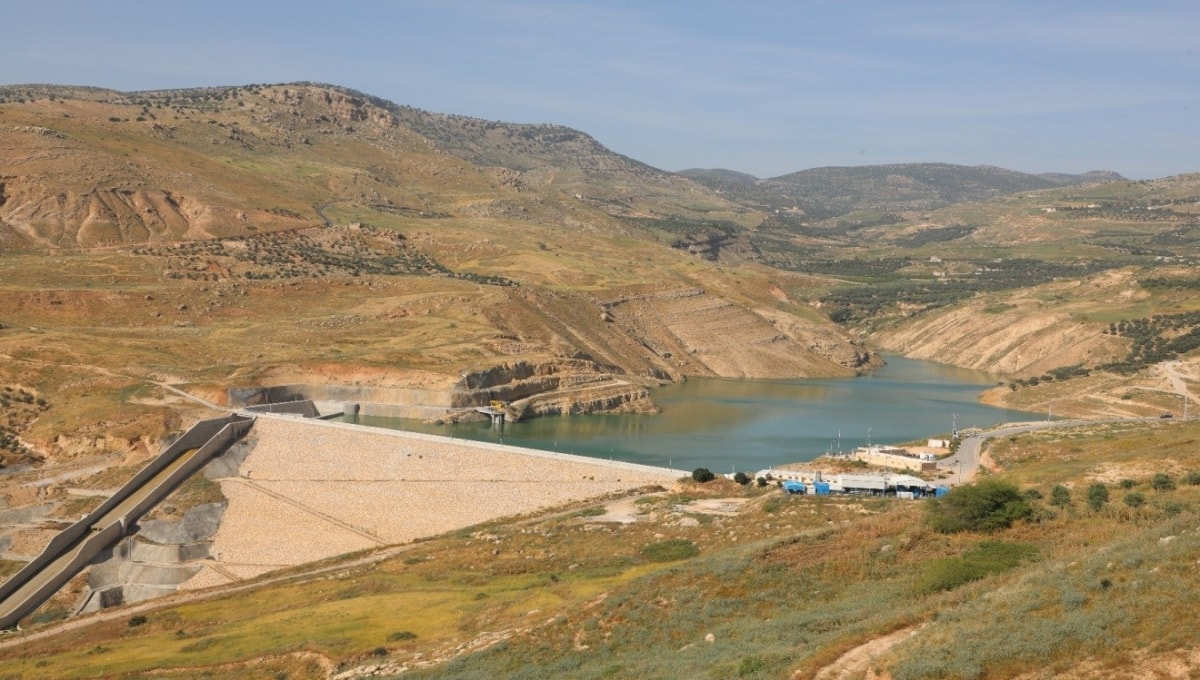
11. Wadi Shuaib Dam - Al-Balqa Governorate
It is of the earth type, with a storage capacity of 1.4 million cubic meters. The dam was established in 1969, and is used to irrigate crops and provide underground nutrition.
- The tributaries of Wadi Shuaib dam: Wadi Jurayah, Wadi Mahis, Fuheis and Wadi Salt.
- Areas benefiting from the dam: The dam works to irrigate (10) thousand dunums of the old and new Shouna lands, as well as recharge the groundwater.
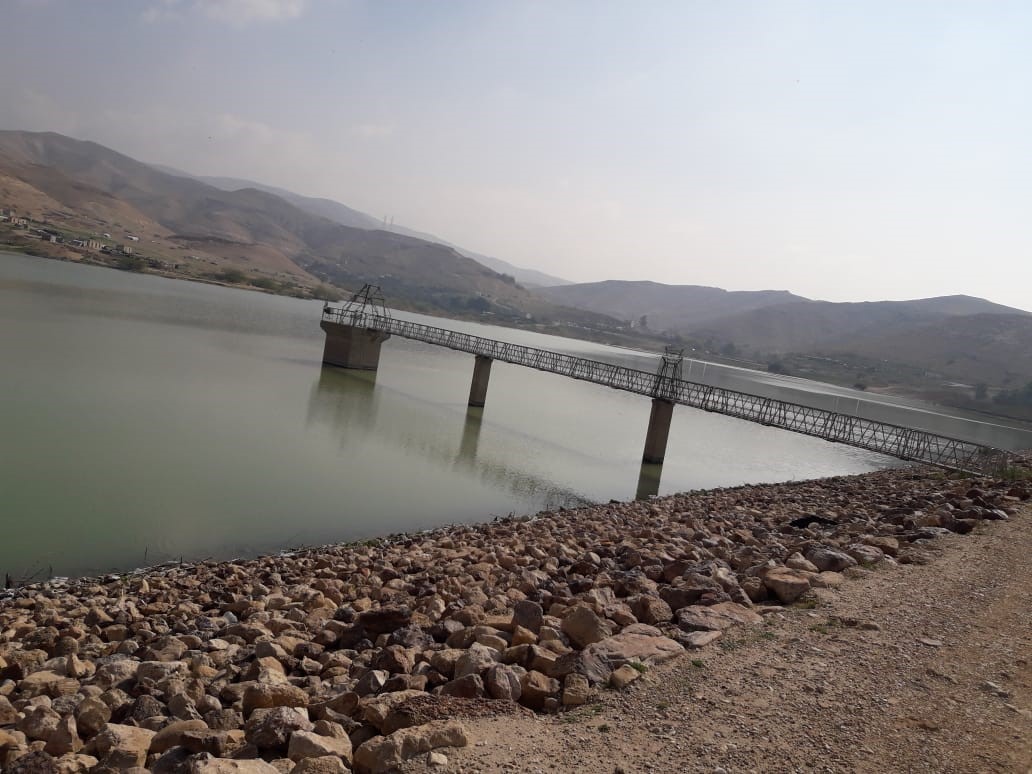
12. Zarqa Ma'in Dam
The dam is located at the top of the Ma'in Hammamet Resort and is 21 km away from the Jordan Valley. Its storage capacity is 2 million cubic meters. It is of a heterogeneous type of cumulus with a concrete face with a height of (30) meters. Its storage began in (2017).
Objectives of establishing the dam:
- Storing the flood waters of Wadi Zarqa Ma'in, which goes wasted to the Dead Sea.
- Protection of the Ma'in Baths Resort from flooding.
- Utilizing the stored water to irrigate the lands below the project.
- Underground charging of springs.
- Using the water stored in the dam for any other purpose.
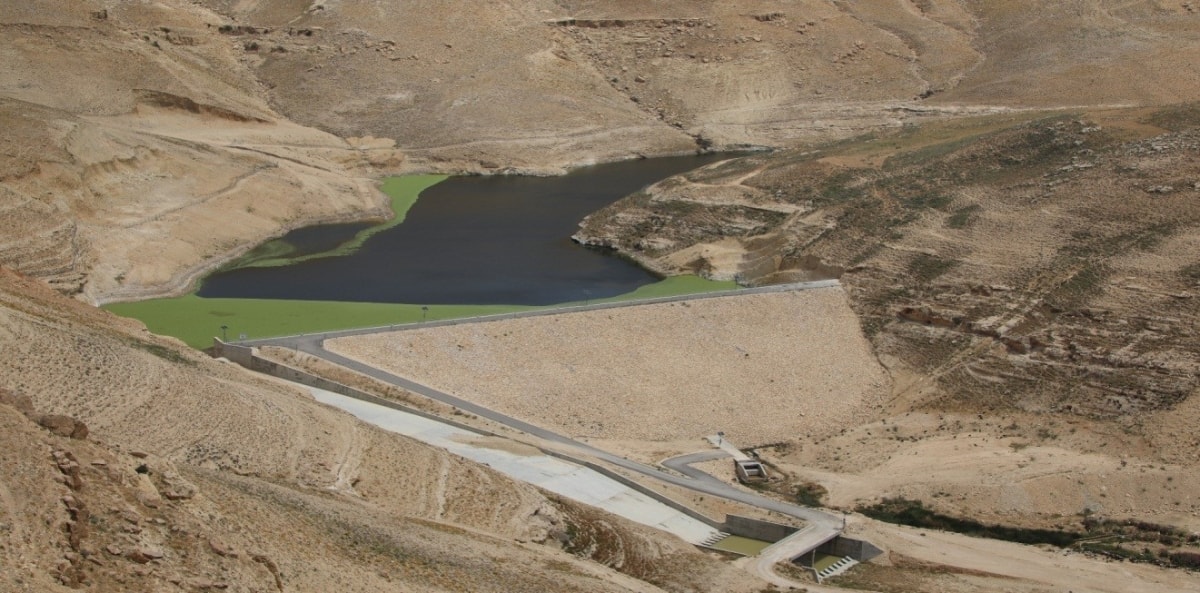
13. Karak Dam - Karak Governorate
The Karak Dam is located in the Karak Governorate, Ghor al-Mazraa Brigade. The body of the dam is heavy concrete. Work began in 2017.
- The dam's tributaries: Wadi Karak.
- The areas benefiting from the dam: It is used to irrigate the lands of the farm valley.
- Dam objectives: To enhance the available water resources in Wadi Karak, Ghor al-Mazraa and Ghor al-Haditha, for the purposes of irrigation, developing the surrounding environment and contributing to staving off the danger of floods.
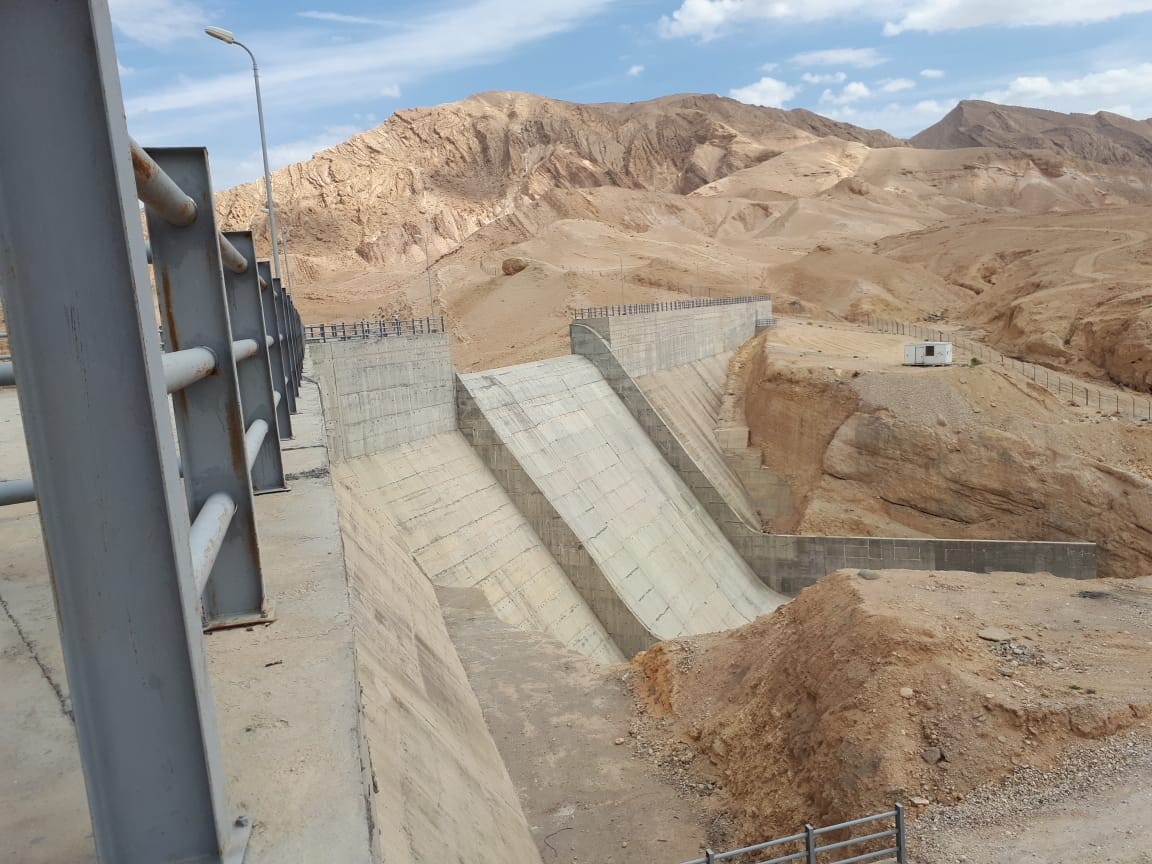
14. Lajoun Dam - Karak Governorate
The Lajoun Dam is located in the Karak Governorate, about 1 km away from Wadi Al-Ghabyan. The body of the dam has a concrete face, with a height of (26) meters, a length of (140) meters, and a storage capacity of (a) one million cubic meters.
- Tributaries of the Lajoun Dam: Wadi Al-Ghabyan
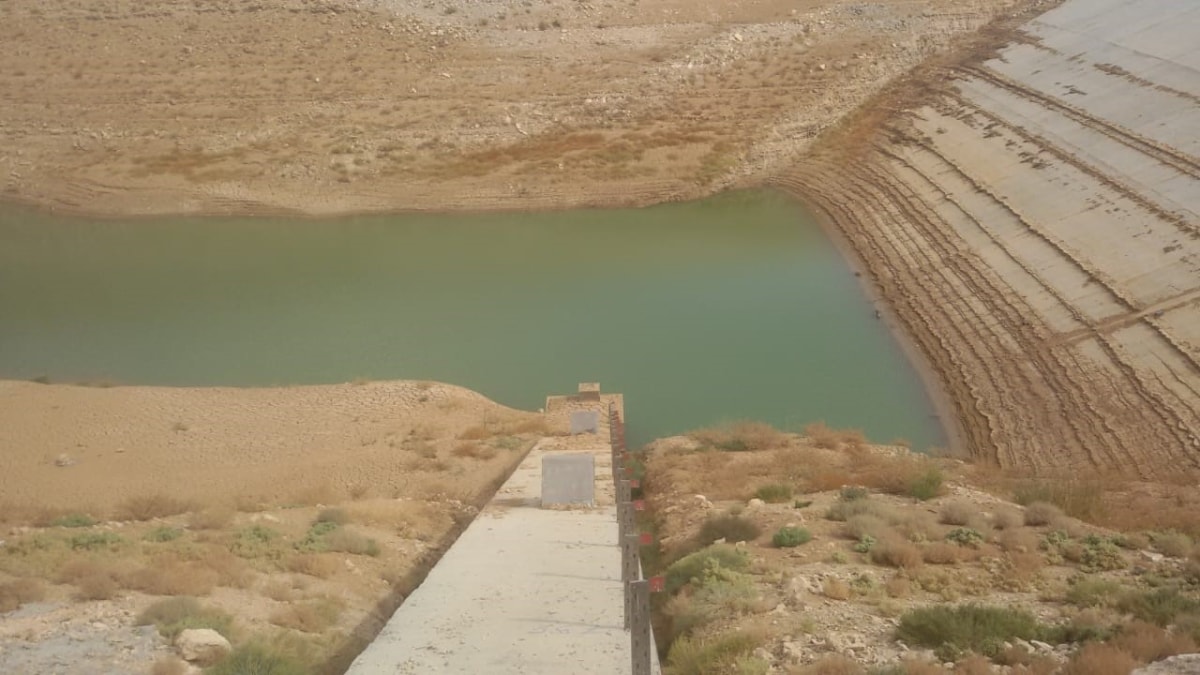
15. Wadi Rahma Dam - Wadi Araba
The Wadi Rahma Dam is located in the Wadi Araba region. It has a storage capacity of (0.4) million cubic meters. It was established in 2017 and is still in the maintenance stage. The aim is to irrigate crops and protect the area from floods.
16. Dam bin Hammad - Karak Governorate
The Ibn Hammad Dam is located in the Karak Governorate. It has a storage capacity of (4) million cubic metres. Its construction was started in 2015 and the project is still under implementation. Its objective is to irrigate crops, ground nutrition and industrial purposes.
17. Al-Fidan Dam - Wadi Araba
The Al-Fidan Dam is located in the Wadi Araba region. Its construction began in 2017, with a storage capacity of (3.4) million cubic meters. The project is still under implementation, and its aim is to irrigate crops and household purposes.
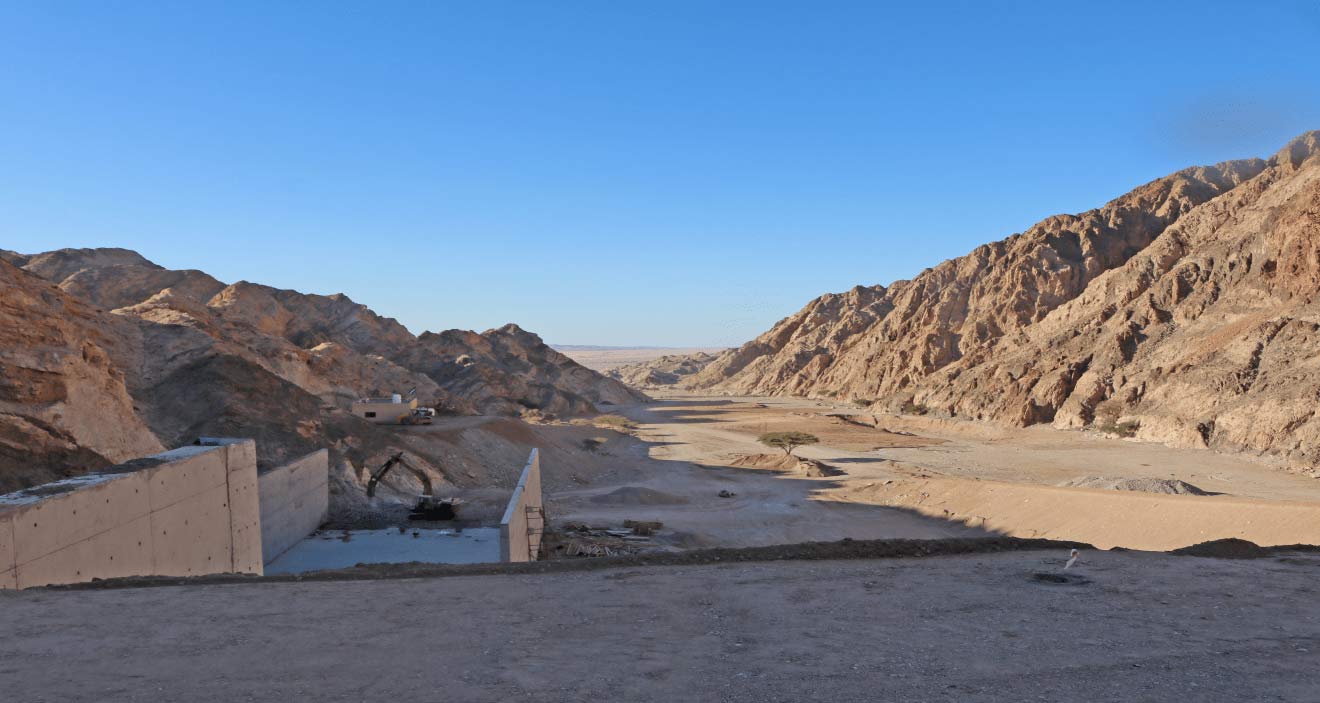
Arabia Weather App
Download the app to receive weather notifications and more..
